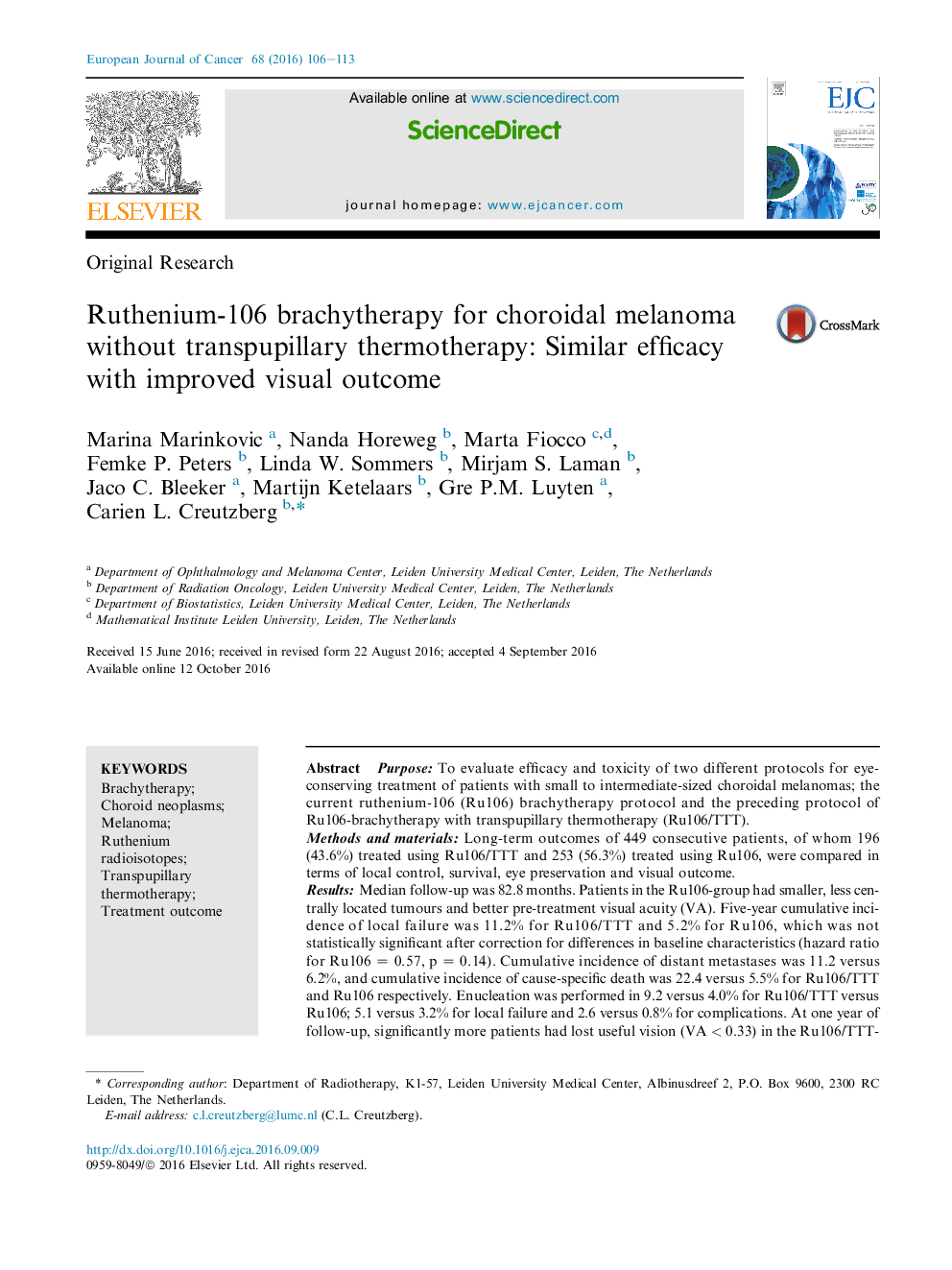| کد مقاله | کد نشریه | سال انتشار | مقاله انگلیسی | نسخه تمام متن |
|---|---|---|---|---|
| 5526560 | 1547066 | 2016 | 8 صفحه PDF | دانلود رایگان |

- Ruthenium-106 brachytherapy with or without transpupillary thermotherapy (TTT) provides excellent local tumour control.
- Equally high-cosmetic and functional eye preservation rates despite discontinuation of TTT.
- Ru106-brachytherapy without TTT yields significantly longer preservation of visual acuity.
- Vital prognosis of choroidal melanoma patients is independent of local treatment type.
PurposeTo evaluate efficacy and toxicity of two different protocols for eye-conserving treatment of patients with small to intermediate-sized choroidal melanomas; the current ruthenium-106 (Ru106) brachytherapy protocol and the preceding protocol of Ru106-brachytherapy with transpupillary thermotherapy (Ru106/TTT).Methods and materialsLong-term outcomes of 449 consecutive patients, of whom 196 (43.6%) treated using Ru106/TTT and 253 (56.3%) treated using Ru106, were compared in terms of local control, survival, eye preservation and visual outcome.ResultsMedian follow-up was 82.8 months. Patients in the Ru106-group had smaller, less centrally located tumours and better pre-treatment visual acuity (VA). Five-year cumulative incidence of local failure was 11.2% for Ru106/TTT and 5.2% for Ru106, which was not statistically significant after correction for differences in baseline characteristics (hazard ratio for Ru106 = 0.57, p = 0.14). Cumulative incidence of distant metastases was 11.2 versus 6.2%, and cumulative incidence of cause-specific death was 22.4 versus 5.5% for Ru106/TTT and Ru106 respectively. Enucleation was performed in 9.2 versus 4.0% for Ru106/TTT versus Ru106; 5.1 versus 3.2% for local failure and 2.6 versus 0.8% for complications. At one year of follow-up, significantly more patients had lost useful vision (VA < 0.33) in the Ru106/TTT-group than in the Ru106-group (50.0 versus 24.5%). After two and three years, the differences decreased (54.6 versus 34.0% and 61.7 versus 45.8%, respectively) and lost statistical significance.ConclusionsBoth the current Ru106 and the preceding Ru106/TTT-protocols provided excellent tumour control, cosmetic and functional eye preservation and vital prognosis. The Ru106-protocol yielded prolonged preservation of VA and should be regarded the current standard of treatment.
Journal: European Journal of Cancer - Volume 68, November 2016, Pages 106-113